Last update: April 2023
Comparative genomicsQuest for orthologs
The Gift of Genes – Story
Did Archaea give us sex?
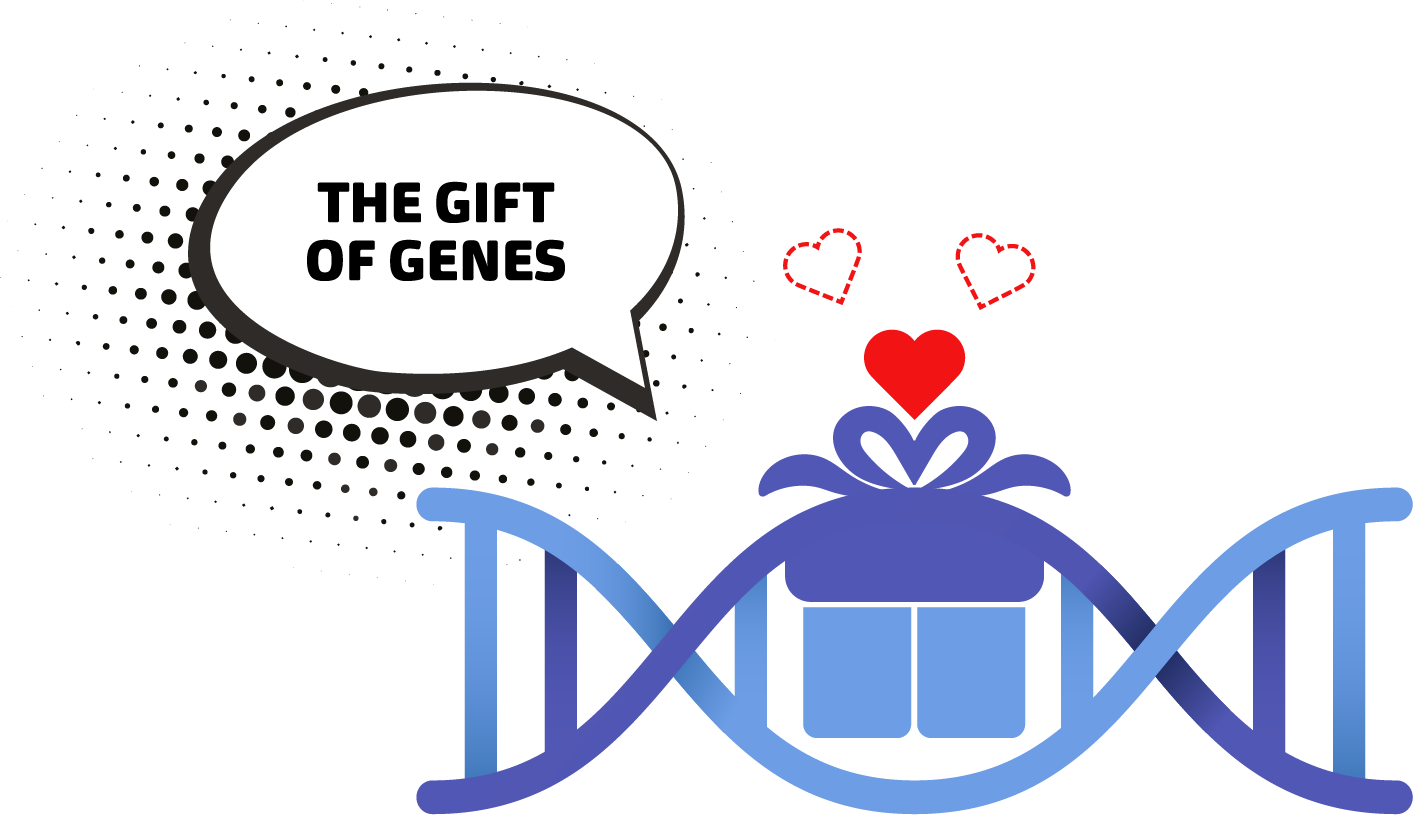
Context
Horizontal Gene Transfer (HGT) plays an important role in the evolution of organisms.
What is it?
In horizontal gene transfer, an organism incorporates DNA from another unrelated organism into its own DNA.
Why is it important?
Genes which are “gifted” from one species to another are useful because they give new functions or traits which were not present before. This ultimately helps the organism adapt to its environment.
For example, many bacteria acquire antibiotic resistance genes through HGT. Some insects steal genes from their favourite plant to counter-attack plant defense mechanisms. Even viruses can transfer their genes, and this has shaped mammalian evolution– approximately 8% of the human genome is of viral origin! (Jump to ‘The gift of genes – Your turn to play’).
Horizontal gene transfer might have even played a key role in the origin of sex.
The origins of sexual reproduction
Sexual reproduction is a characteristic found across nearly every eukaryotic species. The fact that it is so widespread across Eukaryotes indicates that it is an ancient process dating back to the Last Eukaryotic Common Ancestor (LECA).
Note: There are several alternative hypotheses for early evolution. We show here the “Three Domain” hypothesis, in which Eukaryota and Archaea share a common ancestor. An alternative hypothesis is the “Eocyte” hypothesis, in which Eukaryotes descended from ancestral Archaea. These two hypotheses are largely favored by researchers (Source: Wikipedia).
Sexual reproduction means membrane fusion
Sexual reproduction is a complex process that involves the merging of the gamete cells, i.e. the sperm and egg. For this to happen, important cellular events are required such as membrane fusion.
These events use specific proteins to do the job.
Example of gamete (sperm and egg ) fusion in the roundworm C. elegans. Here, the sperm cell is magenta and the egg is green. You can see the moment when the sperm and egg merge, and the two cells become one.
Source: How cells fuse (2019)
Fusogen proteins?
One such class of proteins are fusexins, which are essential in some species for the membrane-merging aspect of sexual reproduction.
Fusexins are found in several Eukaryotes, where they are responsible for gamete cell fusion. Like sexual reproduction, fusexins are so widespread in eukaryotes that it is thought they were already present in the Last Eukaryotic Common Ancestor (LECA).
Although they are a key part of sexual reproduction in these species, fusexins can also be found in other organisms which do not undergo sexual reproduction. For example, fusexins have been found in some viruses and are responsible for fusing the virus and animal host membranes.
However, fusexins had not been found in prokaryotes (Bacteria and Archaea)– until now.
Identification of Archaeal fusexins
Recently, a collaborative team of scientists from Switzerland, Sweden, Argentina, Israel, UK, and Uruguay found the first evidence that fusexins also exists in prokaryotes, specifically Archaea. They named the gene coding for this protein Fsx1. You can take a look at its 3D structure below, click on it and rotate it.
Source: Discovery of archaeal fusexins homologous to eukaryotic HAP2/GCS1 gamete fusion proteins (2022) / Fsx1 in UniProtKB / Fsx1 in PDB
But how did they prove that this fusexin is in Archaea?
1. Bioinformatics
Homologous proteins are proteins that have a comparable structure and evolutionary lineage to a protein found in a different species. It is difficult to recognize the similarity (homology) of proteins which started diverging a very long time ago. This is the case for fusexin proteins in Eukaryotes and Archaea, as they started diverging more than 2 billion years ago. Now, their sequences have little in common.
Special bioinformatics techniques were used to search sequence databases for similar proteins, even if the sequences have diverged substantially. The researchers were able to find the same fusexin protein in other species and used them to build a phylogenetic tree to show that they are indeed related.
2. Crystallography
This is a technique which uses X-rays and light diffraction to study the 3D structure, or precise shape, of proteins. With this, the researchers deciphered the 3D structure of the Archaea Fsx1 protein for the first time.
They found that its structure is remarkably similar to known fusexin proteins in other species.

3. Microscopy
The authors put the newly-discovered Archaea fusexin protein to the test by looking under the microscope to see if it indeed had the ability to merge cells, in real time.
They took cells which had a copy of the Archaeal Fsx1 protein and made their nucleus immunofluoresce (“glow”) either magenta or green. The cells were then mixed.
Under the microscope, the researchers were able to observe hybrid cells– those with BOTH magenta and green nuclei within them!
This means that the Archaeal fusexin protein could successfully merge the cell membranes.
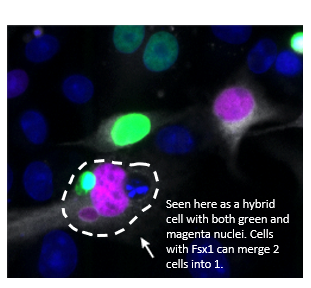
https://www.nature.com/articles/s41467-022-31564-1#Sec34
See supplementary Movie1
HGT and the evolutionary origins of sex
Fusexins are found in many Eukaryotes, but only in some Viruses and Archaea, and not at all in Bacteria.
This poses an interesting dilemma– when did the genes coding for fusexins proteins arise and what is their evolutionary history?
Scientists have 3 potential hypotheses, each involving horizontal gene transfer.
Which came first: the archaea, the virus, or the egg?
Hypothesis
#1: Virus-first scenario
Ancestral fusexin genes started in Viruses, then were horizontally transferred to Eukaryotes and Archaea.
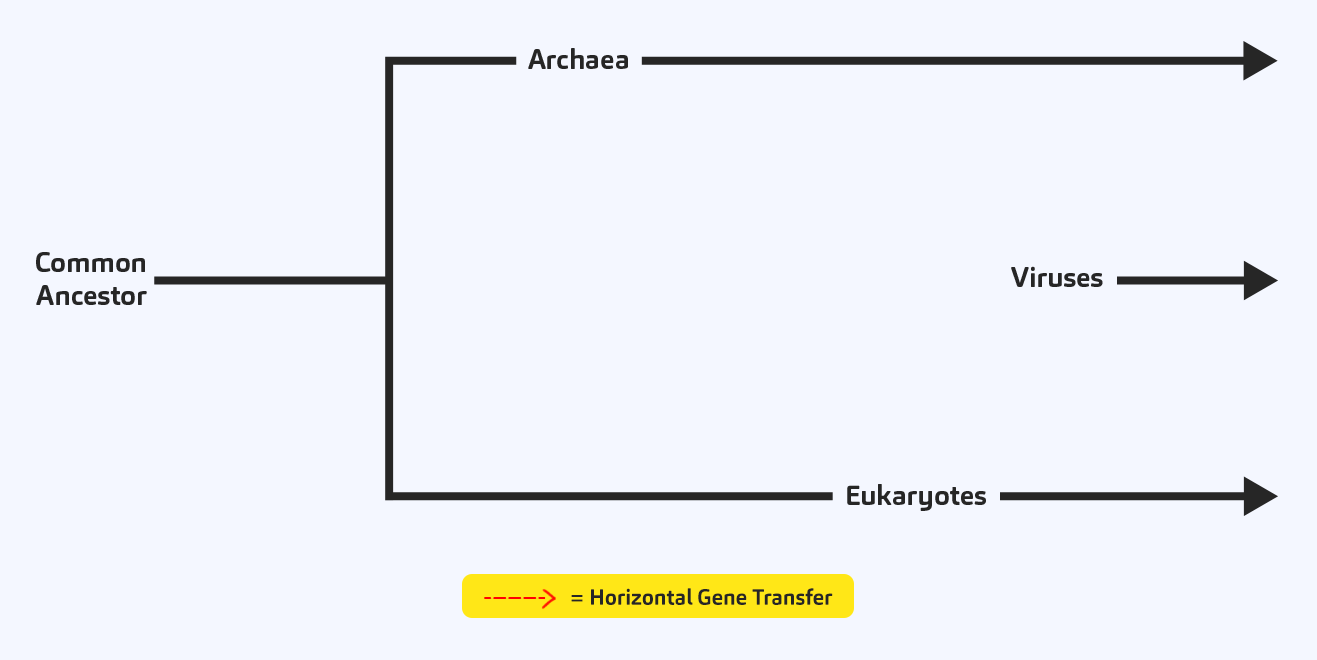
#2: Eukarya-first scenario
Ancestral fusexin genes originated in the Last Eukaryotic Common Ancestor (LECA), and then were horizontally transferred to Archaea as well as viruses.
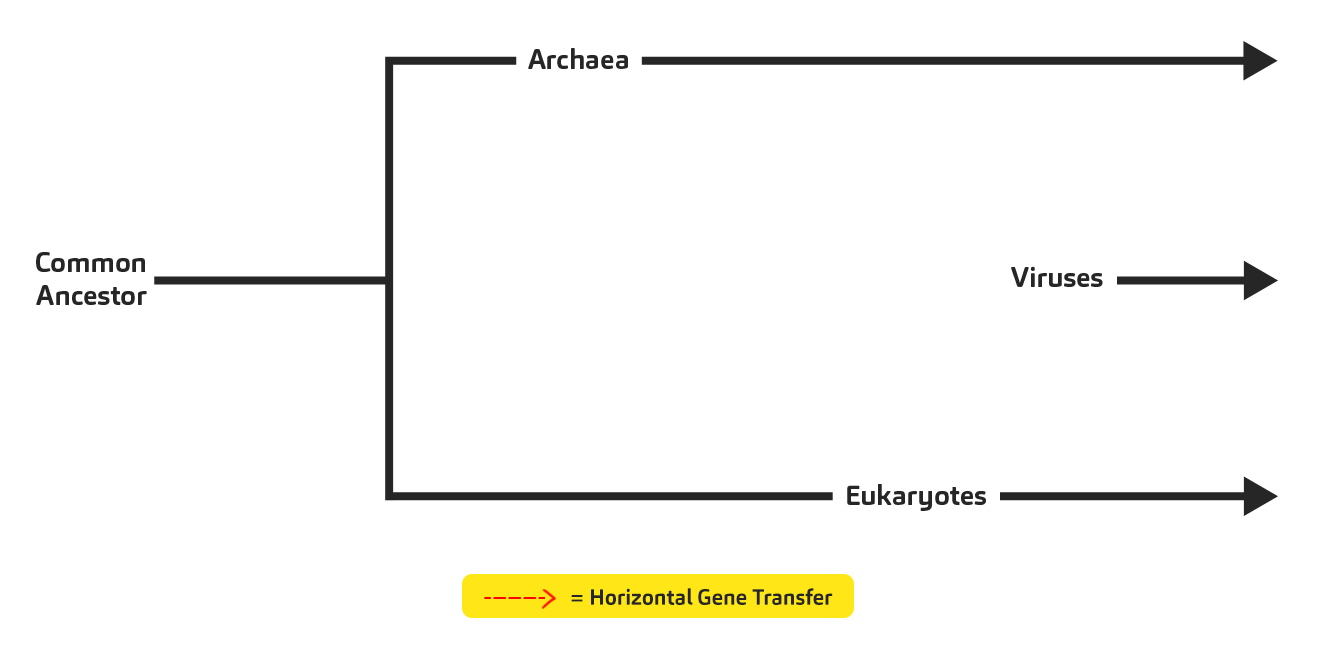
#3: Archaea-first scenario
Fusexin genes first originated in Archaea and were then horizontally transferred to the early Eukaryotes, where they were used for the first sexual reproduction.
Finally, the fusexin genes were horizontally transferred from Eukaryotes to Viruses.
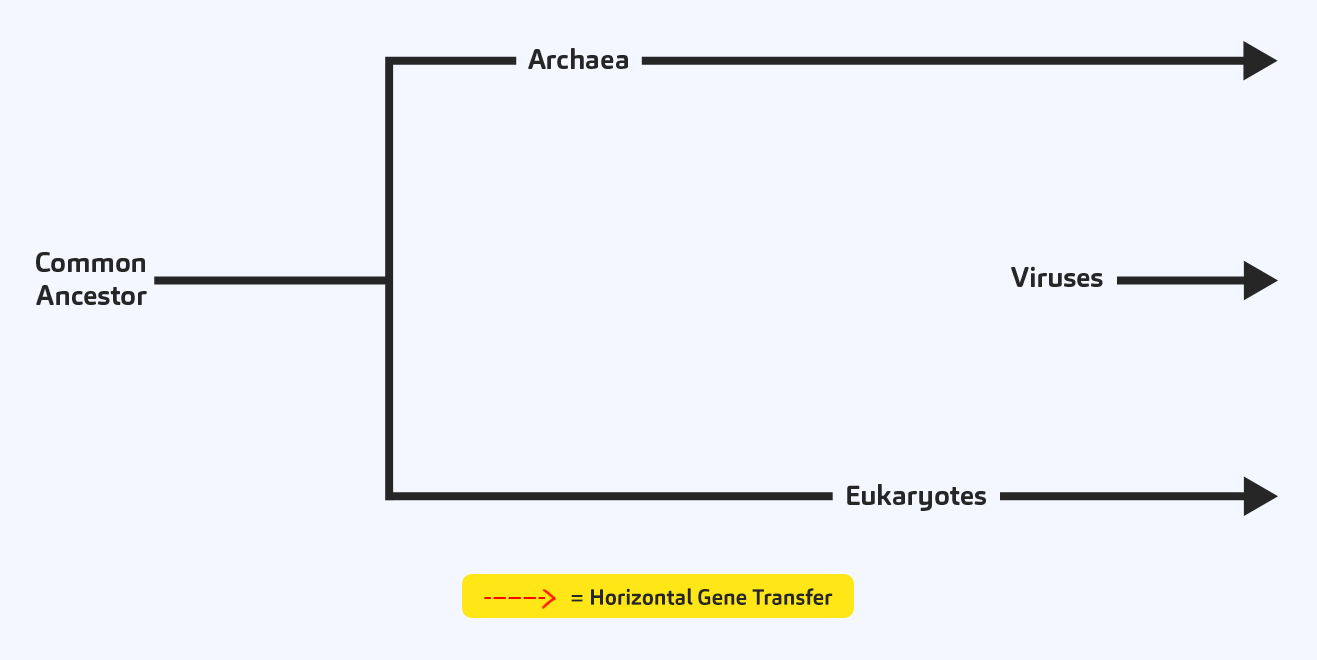
Did Archaea give us sex?
We now know that fusexin genes, which are essential for merging cell membranes during sexual reproduction, can be found in not only Eukaryotes and Viruses, but in Archaea as well.
However, it is still unclear if fusexin first originated in Eukaryotes, Viruses, or Archaea. Regardless of their origin story, researchers believe that the fusexin gene was exchanged across domains by horizontal gene transfer.
Although Viruses and Archaea don’t have sex, some of the essential components which are used for sexual reproduction in Eukaryotes were shared via horizontal gene transfer billions of years ago!
Your turn to play
Horizontal gene transfer has contributed to countless other adaptations throughout the evolution of species. Discover how HGT helps Japanese people digest sushi, how HGT was essential for placenta development in mammals, and much more in Your Turn to Play!
